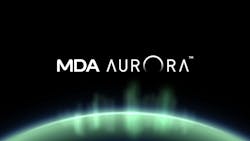MDA Space demonstrates Ka-band direct radiating array with digital beamforming
Summary points:
-
MDA Space has successfully demonstrated digital beamforming and steering using direct sampling with its Ka-band direct radiating array (DRA), which simplifies system design and reduces satellite mass, power, and cost.
-
The company’s AURORA system supports scalable, electronically steered, high-capacity spot beams tailored for next-generation satellite constellations and 5G networks, offering increased flexibility and efficient resource use.
-
A demonstration lab in Montréal showcases the technology’s capabilities, including thermal imaging of beam steering and a full communication chain test setup linking user terminals to gateway ground stations.
MONTREAL - MDA Space in Montreal says it has achieved what it claims is an industry first by digitally forming and steering multiple beams using direct sampling with its Ka-band direct radiating array (DRA).
The demonstration validates key capabilities of the MDA AURORA DRA system, including simultaneous, electronically steered beams – technologies that are critical to advancing broadband connectivity and 5G support through next-generation satellite constellations. The milestone also marks progress in the development of AURORA’s digital payload architecture.
Digital beamforming is a signal processing method that enables satellites to generate and direct multiple beams dynamically and precisely using software, rather than fixed hardware components. This allows for greater flexibility, efficiency, and adaptability in managing satellite communications, especially in high-demand, data-intensive environments.
ESA announces five companies selected for European Launch Challenge
Beamforming tech
Traditionally, Ka-band DRAs require intermediate frequency conversion to form and steer beams. MDA Space’s use of direct sampling simplifies this process, reducing satellite mass, power consumption, and overall cost, the company said.
"MDA AURORA enables us to deliver signals precisely where and when they are needed while optimizing satellite resources," said Luigi Pozzebon, Vice-President of Satellite Systems at MDA Space. "This demonstration is a critical step toward providing the advanced capabilities that will help customers compete in the rapidly evolving satellite communications market."
The AURORA DRA is designed to scale across hundreds of array elements and support multiple high-capacity spot beams. The ability to electronically steer these beams allows satellite operators to meet increasing demands for low-latency, high-speed data transmission.
Customers can observe the AURORA technology at MDA Space’s Montreal demonstration lab, where beam steering is visualized through thermal imaging on a test chamber. The prototype setup will be integrated with an onboard processor to showcase full end-to-end communications between a user terminal and a gateway ground station.
About the Author
Jamie Whitney
Senior Editor
Jamie Whitney joined the staff of Military & Aerospace Electronics in 2018 and oversees editorial content and produces news and features for Military & Aerospace Electronics, attends industry events, produces Webcasts, and oversees print production of Military & Aerospace Electronics.
